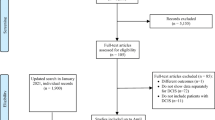Abstract
Background
Non-classic lobular carcinoma in situ (NC-LCIS) represents a spectrum of lesions, histologically distinct from classic LCIS (C-LCIS) and ductal carcinoma in situ (DCIS). Several studies have reported on the safety of breast conservation (BCS) in patients with DCIS or invasive breast cancer and concomitant C-LCIS, yet there are no data addressing this question for patients with concomitant NC-LCIS. We evaluated local recurrence (LR) after BCS in patients with DCIS or invasive cancer and concomitant NC-LCIS.
Patients and Methods
We searched institutional databases using natural language processing to identify patients with DCIS or invasive breast cancer and concomitant NC-LCIS treated with BCS between 2000 and 2015. Charts were reviewed to collect demographics, disease and treatment details, and recurrence events. All results represent descriptive analyses.
Results
We identified 71 patients with DCIS (n = 13) or invasive cancer (n = 58) and concomitant NC-LCIS treated with BCS. Median patient age was 59 years (33–77 years), and median invasive tumor size was 1.2 cm (0.1–6.9 cm); 62% of DCIS and 79% of invasive cancer patients had hormone receptor (HR)-positive disease. Among DCIS patients, seven (54%) received radiation and none hormonal therapy. Among those with invasive cancer, 52 (90%) received radiation, 17 (29%) received chemotherapy and 44 of 55 with HR-positive disease (78%) received hormonal therapy. At median follow-up of 79 months (1–265 months), the LR rate was 8% and 2% among patients with DCIS and invasive cancer, respectively.
Conclusion
NC-LCIS is rarely present in association with DCIS or invasive cancer, and it does not appear to impact LR outcomes following BCS.
Similar content being viewed by others
Data Availability
The data are available in a REDCap database created for this study upon receiving IRB approval. Please contact the corresponding author to get access to the database.
References
King TA, Reis-Filho JS. Lobular neoplasia. Surg Oncol Clin N Am. 2014;23(3):487–503. https://doi.org/10.1016/j.soc.2014.03.002.
Chen YKT, Palacios J, Shin SJ, Simpson PT. Lobular carcinoma in situ. In: TWCE Board, editor. Breast tumours. Lyon: IARC Press; 2019.
Harrison BT, Nakhlis F, Dillon DA, et al. Genomic profiling of pleomorphic and florid lobular carcinoma in situ reveals highly recurrent ERBB2 and ERRB3 alterations. Mod Pathol. 2020;33(7):1287–97. https://doi.org/10.1038/s41379-020-0459-6.
Schnitt SJ, Brogi E, Chen YY, King TA, Lakhani SR. American registry of pathology expert opinions: the spectrum of lobular carcinoma in situ: diagnostic features and clinical implications. Ann Diagn Pathol. 2020;45:151–481. https://doi.org/10.1016/j.anndiagpath.2020.151481.
Nakhlis F, Harrison BT, Giess CS, et al. Evaluating the rate of upgrade to invasive breast cancer and/or ductal carcinoma in situ following a core biopsy diagnosis of non-classic lobular carcinoma in situ. Ann Surg Oncol. 2019;26(1):55–61. https://doi.org/10.1245/s10434-018-6937-0.
King TA, Pilewskie M, Muhsen S, et al. Lobular carcinoma in situ: a 29-year longitudinal experience evaluating clinicopathologic features and breast cancer risk. J Clin Oncol. 2015;33(33):3945–52. https://doi.org/10.1200/JCO.2015.61.4743.
Wong SM, King T, Boileau JF, Barry WT, Golshan M. Population-based analysis of breast cancer incidence and survival outcomes in women diagnosed with lobular carcinoma in situ. Ann Surg Oncol. 2017;24(9):2509–17. https://doi.org/10.1245/s10434-017-5867-6.
Nakhlis F, Gilmore L, Gelman R, et al. Incidence of adjacent synchronous invasive carcinoma and/or ductal carcinoma in-situ in patients with lobular neoplasia on core biopsy: results from a prospective multi-institutional registry (TBCRC 020). Ann Surg Oncol. 2016;23(3):722–8. https://doi.org/10.1245/s10434-015-4922-4.
Murray MP, Luedtke C, Liberman L, Nehhozina T, Akram M, Brogi E. Classic lobular carcinoma in situ and atypical lobular hyperplasia at percutaneous breast core biopsy: outcomes of prospective excision. Cancer. 2013;119(5):1073–9. https://doi.org/10.1002/cncr.27841.
Genco IS, Tugertimur B, Chang Q, Cassell L, Hajiyeva S. Outcomes of classic lobular neoplasia diagnosed on breast core needle biopsy: a retrospective multi-center study. Virchows Arch. 2020;476(2):209–17. https://doi.org/10.1007/s00428-019-02685-8.
Laws A, Katlin F, Nakhlis F, Chikarmane SA, Schnitt SJ, King TA. Atypical lobular hyperplasia and classic lobular carcinoma in situ can be safely managed without surgical excision. Ann Surg Oncol. 2022;29(3):1660–7. https://doi.org/10.1245/s10434-021-10827-z.
Matar R, Sevilimedu V, Park A, King TA, Pilewskie M. Comparison of outcomes for classic-type lobular carcinoma in situ managed with surgical excision after core biopsy versus observation. Ann Surg Oncol. 2022;29(3):1670–9. https://doi.org/10.1245/s10434-021-10828-y.
Sullivan ME, Khan SA, Sullu Y, Schiller C, Susnik B. Lobular carcinoma in situ variants in breast cores: potential for misdiagnosis, upgrade rates at surgical excision, and practical implications. Arch Pathol Lab Med. 2010;134(7):1024–8. https://doi.org/10.1043/2009-0300-OA.110.5858/2009-0300-OA.1.
Flanagan MR, Rendi MH, Calhoun KE, Anderson BO, Javid SH. Pleomorphic lobular carcinoma in situ: radiologic-pathologic features and clinical management. Ann Surg Oncol. 2015;22(13):4263–9. https://doi.org/10.1245/s10434-015-4552-x.
Foschini MP, Miglio R, Fiore R, et al. Pre-operative management of pleomorphic and florid lobular carcinoma in situ of the breast: report of a large multi-institutional series and review of the literature. Eur J Surg Oncol. 2019;45(12):2279–86. https://doi.org/10.1016/j.ejso.2019.07.011.
Kuba MG, Murray MP, Coffey K, Calle C, Morrow M, Brogi E. Morphologic subtypes of lobular carcinoma in situ diagnosed on core needle biopsy: clinicopathologic features and findings at follow-up excision. Mod Pathol. 2021;34(8):1495–506. https://doi.org/10.1038/s41379-021-00796-9.
Harris CG, Eslick GD. Impact of lobular carcinoma in situ on local recurrence in breast cancer treated with breast conservation therapy: a systematic review and meta-analysis. ANZ J Surg. 2021;91(9):1696–703. https://doi.org/10.1111/ans.16671.
Blair SL, Emerson DK, Kulkarni S, Hwang ES, Malcarne V, Ollila DW. Breast surgeon’s survey: no consensus for surgical treatment of pleomorphic lobular carcinoma in situ. Breast J. 2013;19(1):116–8. https://doi.org/10.1111/tbj.12062.
van Dongen JA, Voogd AC, Fentiman IS, et al. Long-term results of a randomized trial comparing breast-conserving therapy with mastectomy: European Organization for Research and Treatment of Cancer 10801 trial. J Natl Cancer Inst. 2000;92(14):1143–50. https://doi.org/10.1093/jnci/92.14.1143.
Fisher B, Anderson S, Bryant J, et al. Twenty-year follow-up of a randomized trial comparing total mastectomy, lumpectomy, and lumpectomy plus irradiation for the treatment of invasive breast cancer. N Engl J Med. 2002;347(16):1233–41. https://doi.org/10.1056/NEJMoa022152.
Veronesi U, Cascinelli N, Mariani L, et al. Twenty-year follow-up of a randomized study comparing breast-conserving surgery with radical mastectomy for early breast cancer. N Engl J Med. 2002;347(16):1227–32. https://doi.org/10.1056/NEJMoa020989.
Blichert-Toft M, Nielsen M, During M, et al. Long-term results of breast conserving surgery vs. mastectomy for early-stage invasive breast cancer: 20-year follow-up of the Danish randomized DBCG-82TM protocol. Acta Oncol. 2008;47(4):672–81. https://doi.org/10.1080/02841860801971439.
Wapnir IL, Dignam JJ, Fisher B, et al. Long-term outcomes of invasive ipsilateral breast tumor recurrences after lumpectomy in NSABP B-17 and B-24 randomized clinical trials for DCIS. J Natl Cancer Inst. 2011;103(6):478–88. https://doi.org/10.1093/jnci/djr027.
Margenthaler JA, Dietz JR, Chatterjee A. The landmark series: breast conservation trials (including oncoplastic breast surgery). Ann Surg Oncol. 2021;28(4):2120–7. https://doi.org/10.1245/s10434-020-09534-y.
Mechera R, Viehl CT, Oertli D. Factors predicting in-breast tumor recurrence after breast-conserving surgery. Breast Cancer Res Treat. 2009;116(1):171–7. https://doi.org/10.1007/s10549-008-0187-y.
Jobsen J, van der Palen J, Riemersma S, Heijmans H, Ong F, Struikmans H. Pattern of ipsilateral breast tumor recurrence after breast-conserving therapy. Int J Radiat Oncol Biol Phys. 2014;89(5):1006–14. https://doi.org/10.1016/j.ijrobp.2014.04.039.
Moran M, Haffty BG. Lobular carcinoma in situ as a component of breast cancer: the long-term outcome in patients treated with breast-conservation therapy. Int J Radiat Oncol Biol Phys. 1998;40(2):353–8. https://doi.org/10.1016/s0360-3016(97)00573-7.
Abner AL, Connolly JL, Recht A, et al. The relation between the presence and extent of lobular carcinoma in situ and the risk of local recurrence for patients with infiltrating carcinoma of the breast treated with conservative surgery and radiation therapy. Cancer. 2000;88(5):1072–7. https://doi.org/10.1002/(sici)1097-0142(20000301)88:5%3c1072::aid-cncr18%3e3.0.co;2-d.
Ben-David MA, Kleer CG, Paramagul C, Griffith KA, Pierce LJ. Is lobular carcinoma in situ as a component of breast carcinoma a risk factor for local failure after breast-conserving therapy? Results of a matched pair analysis. Cancer. 2006;106(1):28–34. https://doi.org/10.1002/cncr.21555.
Jolly S, Kestin LL, Goldstein NS, Vicini FA. The impact of lobular carcinoma in situ in association with invasive breast cancer on the rate of local recurrence in patients with early-stage breast cancer treated with breast-conserving therapy. Int J Radiat Oncol Biol Phys. 2006;66(2):365–71. https://doi.org/10.1016/j.ijrobp.2006.05.070.
Ciocca RM, Li T, Freedman GM, Morrow M. Presence of lobular carcinoma in situ does not increase local recurrence in patients treated with breast-conserving therapy. Ann Surg Oncol. 2008;15(8):2263–71. https://doi.org/10.1245/s10434-008-9960-8.
Sadek BT, Shenouda MN, Abi Raad RF, et al. Risk of local failure in breast cancer patients with lobular carcinoma in situ at the final surgical margins: is re-excision necessary? Int J Radiat Oncol Biol Phys. 2013;87(4):726–30. https://doi.org/10.1016/j.ijrobp.2013.08.012.
Sasson AR, Fowble B, Hanlon AL, et al. Lobular carcinoma in situ increases the risk of local recurrence in selected patients with stages I and II breast carcinoma treated with conservative surgery and radiation. Cancer. 2001;91(10):1862–9. https://doi.org/10.1002/1097-0142(20010515)91:10%3c1862::aid-cncr1207%3e3.0.co;2-#.
Miller ME, Muhsen S, Zabor EC, et al. Risk of contralateral breast cancer in women with ductal carcinoma in situ associated with synchronous ipsilateral lobular carcinoma in situ. Ann Surg Oncol. 2019;26(13):4317–25. https://doi.org/10.1245/s10434-019-07796-9.
Foote FW, Stewart FW. Lobular carcinoma in situ: a rare form of mammary cancer. Am J Pathol. 1941;17(4):491–6. https://doi.org/10.3322/canjclin.32.4.234.
Fisher ER, Land SR, Fisher B, Mamounas E, Gilarski L, Wolmark N. Pathologic findings from the National Surgical Adjuvant Breast and Bowel Project: twelve-year observations concerning lobular carcinoma in situ. Cancer. 2004;100(2):238–44. https://doi.org/10.1002/cncr.11883.
Gomes DS, Porto SS, Balabram D, Gobbi H. Inter-observer variability between general pathologists and a specialist in breast pathology in the diagnosis of lobular neoplasia, columnar cell lesions, atypical ductal hyperplasia and ductal carcinoma in situ of the breast. Diagn Pathol. 2014;9:121. https://doi.org/10.1186/1746-1596-9-121.
Moran MS, Schnitt SJ, Giuliano AE, et al. Society of Surgical Oncology-American Society for Radiation Oncology consensus guideline on margins for breast-conserving surgery with whole-breast irradiation in stages I and II invasive breast cancer. Ann Surg Oncol. 2014;21(3):704–16. https://doi.org/10.1245/s10434-014-3481-4.
Funding
None.
Author information
Authors and Affiliations
Contributions
All authors contributed equally to the study design, data analysis, and manuscript preparation.
Corresponding author
Ethics declarations
Disclosure
T.A.K. reports speakers honoraria and an advisory board role for Exact Sciences (formerly Genomic Health), and is on the global advisory board of Besins Healthcare. The remaining authors have no conflicts to declare.
Ethics Approval
This research was approved by the Dana-Farber/Harvard Cancer Center Institutional Review Board (study number 16-161).
Additional information
Publisher's Note
Springer Nature remains neutral with regard to jurisdictional claims in published maps and institutional affiliations.
Rights and permissions
About this article
Cite this article
Nakhlis, F., Katlin, F.D., Grossmith, S.C. et al. Presence of Non-classic LCIS Is Not a Contraindication to Breast Conservation in Patients with Concomitant Invasive Breast Cancer or DCIS. Ann Surg Oncol 29, 7696–7702 (2022). https://doi.org/10.1245/s10434-022-12066-2
Received:
Accepted:
Published:
Issue Date:
DOI: https://doi.org/10.1245/s10434-022-12066-2




